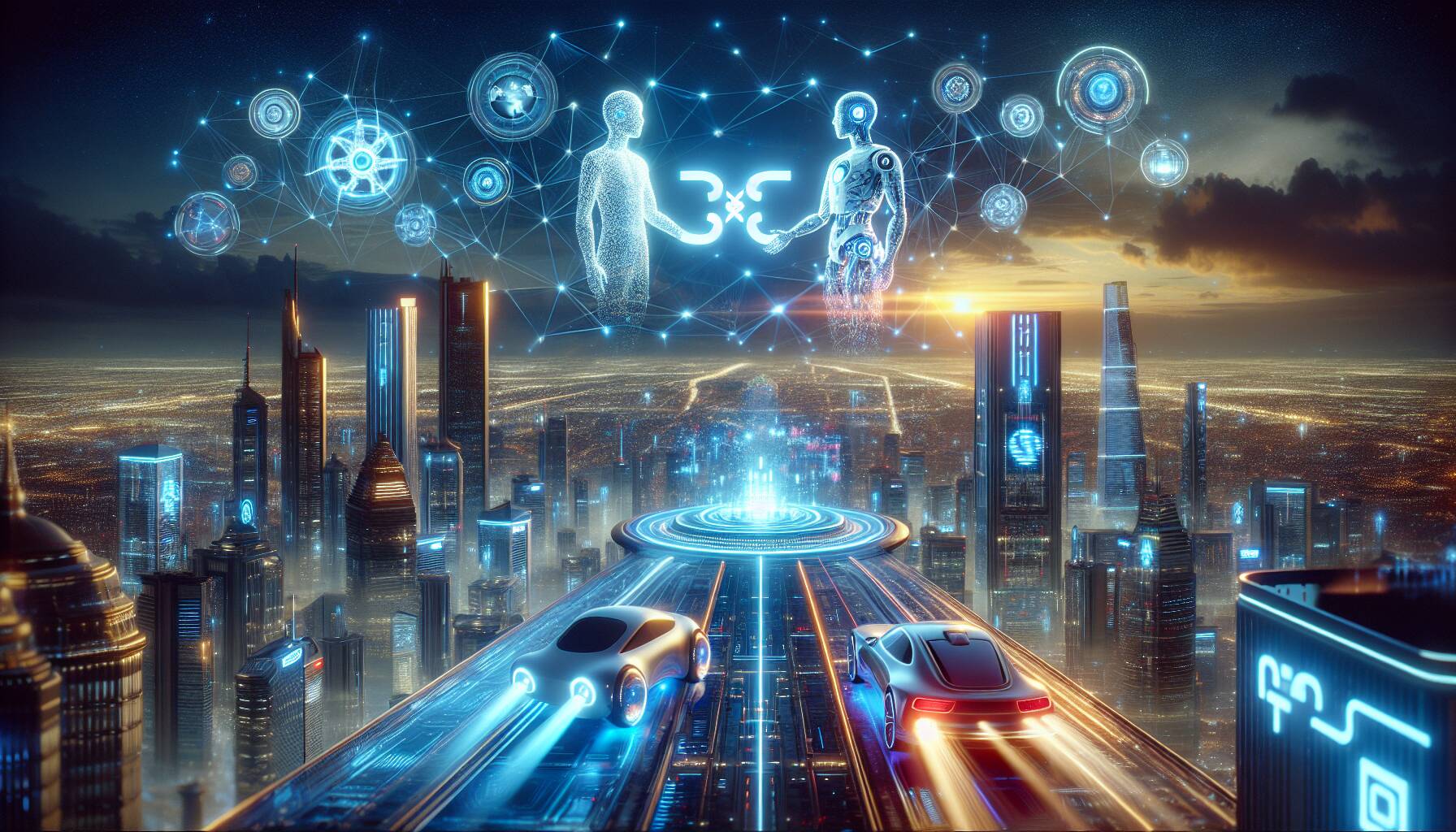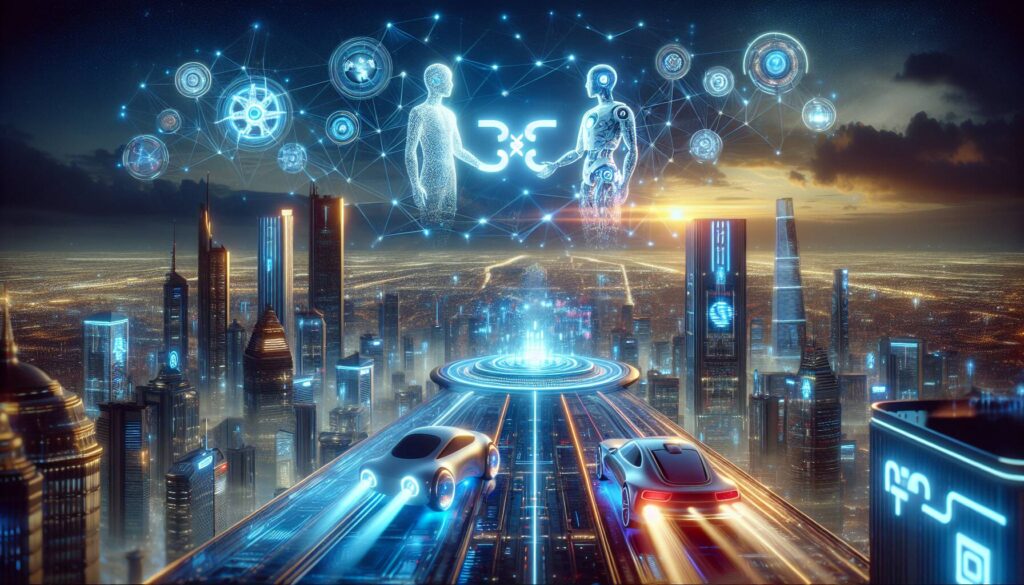The cryptocurrency and blockchain space, often referred to as Web3, is on the verge of a transformative intersection with the rapidly evolving world of generative artificial intelligence (AI). In 2024, this dynamic environment saw groundbreaking advancements in AI research that shifted the narrative surrounding Web3 from speculative projections to genuine utility. Historically, Web3 had a minimal role in shaping AI’s trajectory, but as AI technologies become more sophisticated, the potential for meaningful integration with decentralized systems is becoming clearer.
“Build for where the industry is going, not for where it is.”
This guiding principle, proven successful for tech giants such as Microsoft and Salesforce, is also applicable in the context of AI’s rapid advancements. As the AI landscape continues to expand with new trends emerging, five key developments stand out that could significantly reshape the relationship between Web3 and AI.
Firstly, the focus on reasoning capabilities in AI models, such as GPT-01 and Gemini Flash, marks a new frontier in AI development. With reasoning becoming integral to model performance, there is a growing demand for transparency and traceability in AI-generated content. Here, Web3 has an impressive advantage, as its decentralized architecture can verify the reasoning processes of AI, potentially ensuring credibility in an era where misinformation poses significant risks.
Secondly, the concept of synthetic data training is gaining traction. Advanced AI models now leverage synthetic datasets, reducing reliance on real-world data and enhancing model robustness. A Web3 framework could create a decentralized economy for synthetic data, encouraging contributions from various nodes and fostering innovation within the AI community.
Moreover, the shift toward post-training workflows is reshaping how AI models are developed. Recent approaches allow for AI improvements to be carried out across decentralized networks rather than through centralized resources. This opens the door for Web3 to democratize AI development, empowering a broader range of participants.
Additionally, the rise of distilled models—a process where larger AI models are streamlined into smaller, efficient versions—enhances the promise of decentralized applications. These compact models can be executed on everyday consumer hardware, suggesting opportunities for creating decentralized AI inference marketplaces that could drastically reduce reliance on major cloud providers while rewarding participants through innovative token economies.
Finally, as concerns about the reliability of AI evaluations rise, transparency in performance metrics is increasingly essential. By utilizing blockchain technology for verification, Web3 has the potential to introduce groundbreaking accountability standards in AI evaluation, thereby improving trust in the performance claims of various models.
As generative AI undergoes significant changes, the question lingers: can Web3 evolve rapidly enough to capitalize on these new opportunities and secure its place in the future of AI? The coming years could witness a pivotal shift where decentralized architectures play a crucial role in supporting AI development, transforming both industries in the process.

Building for the Future: The Intersection of Web3 and AI
Understanding the evolving landscape of AI and Web3 is crucial for adapting to future changes and opportunities. Here are the key points that highlight this transition and its potential impact:
- The Reasoning Race
- Reasoning in AI models is becoming a critical feature.
- Web3 can provide traceability and transparency for AI-generated content.
- Synthetic Data Training
- Synthetic data enables the creation of high-quality datasets for model training.
- Web3 could foster a decentralized economy for synthetic data, rewarding contributors.
- Shift to Post-training Workflows
- Models are moving towards post-training processes, reducing reliance on large data farms.
- Web3 could democratize AI model refinement through decentralized contributions.
- The Rise of Distilled Small Models
- Small, efficient models can operate on less powerful hardware.
- Web3 could enable decentralized inference networks for these models.
- Demand for Transparent AI Evaluations
- Current evaluation methods for AI models lack reliability and transparency.
- Web3 technology can enhance accountability via blockchain-based validation.
The convergence of these trends indicates that Web3 could play a pivotal role in the future development of AI by ensuring transparency, democratization, and utility. As these technologies continue to evolve, adapting to these changes can significantly impact various industries and individual prospects, encouraging a shift towards more structured, reliable, and decentralized systems.
The Future of Web3 in the Generative AI Landscape
As the wave of generative AI rapidly advances, the intersection of Web3 technologies presents both dazzling opportunities and daunting challenges. The insights drawn from current industry shifts highlight the potential for Web3 to transform AI practices through decentralized approaches. However, it is essential to weigh the competitive advantages against the disadvantages that may hinder its integration.
Competitive Advantages: The most notable advantage for Web3 in this new AI era lies in its inherent qualities of transparency and trust. As AI models like GPT-01 and DeepSeek R1 increasingly embed reasoning capabilities, the demand for verifiable processes becomes critical. Here, Web3 can step in by providing immutable records through blockchain technology, making every reasoning step traceable and accountable. Additionally, the surge in synthetic data generation opens the door for a decentralized AI data economy, which can disrupt traditional mechanisms of data acquisition. This collaborative model allows for a more democratized training process, rewarding contributors for their computational efforts.
Another promising trend for Web3 is the rise of distilled models, compact enough to operate on consumer-grade hardware. This accessibility democratizes AI power, enabling a vast array of users to engage in decentralized inference networks. Startups and independent developers could leverage Web3 infrastructures for developing applications that utilize these models, potentially lowering the barriers to entry in AI adoption.
Competitive Disadvantages: Despite these prospects, several challenges loom over Web3’s integration into generative AI. The transition from speculative hype to practical utility has been slow, and many Web3 projects still lack tangible results. As the industry shifts focus to post-training workflows and specialized models, Web3 must quickly catch up to prove its relevance. The technical complexities involved in integrating Web3 frameworks with AI operations could further deter adoption, especially among enterprises that may prefer traditional solutions.
Moreover, the abundance of speculation surrounding meme-driven platforms in the previous year left many potential users skeptical of Web3’s capacity to deliver real-world value. This hanging cloud of skepticism can pose significant challenges for those who seek to establish a foothold in the competitive generative AI arena.
While these developments present a golden opportunity for decentralized applications, they also signify a critical period for existing players in the industry. Traditional tech companies might find themselves pressured to adapt their models in the face of increasing decentralization. Conversely, this shift could create a headache for legacy systems that may struggle to keep pace with agile innovations in Web3, leading to disruption in market positions.
If executed thoughtfully, the evolution of generative AI integrated with Web3 can empower creators, small businesses, and innovative startups. However, the success of this integration will depend on the community’s ability to address challenges head-on and tailor solutions that resonate with users’ evolving needs.

















